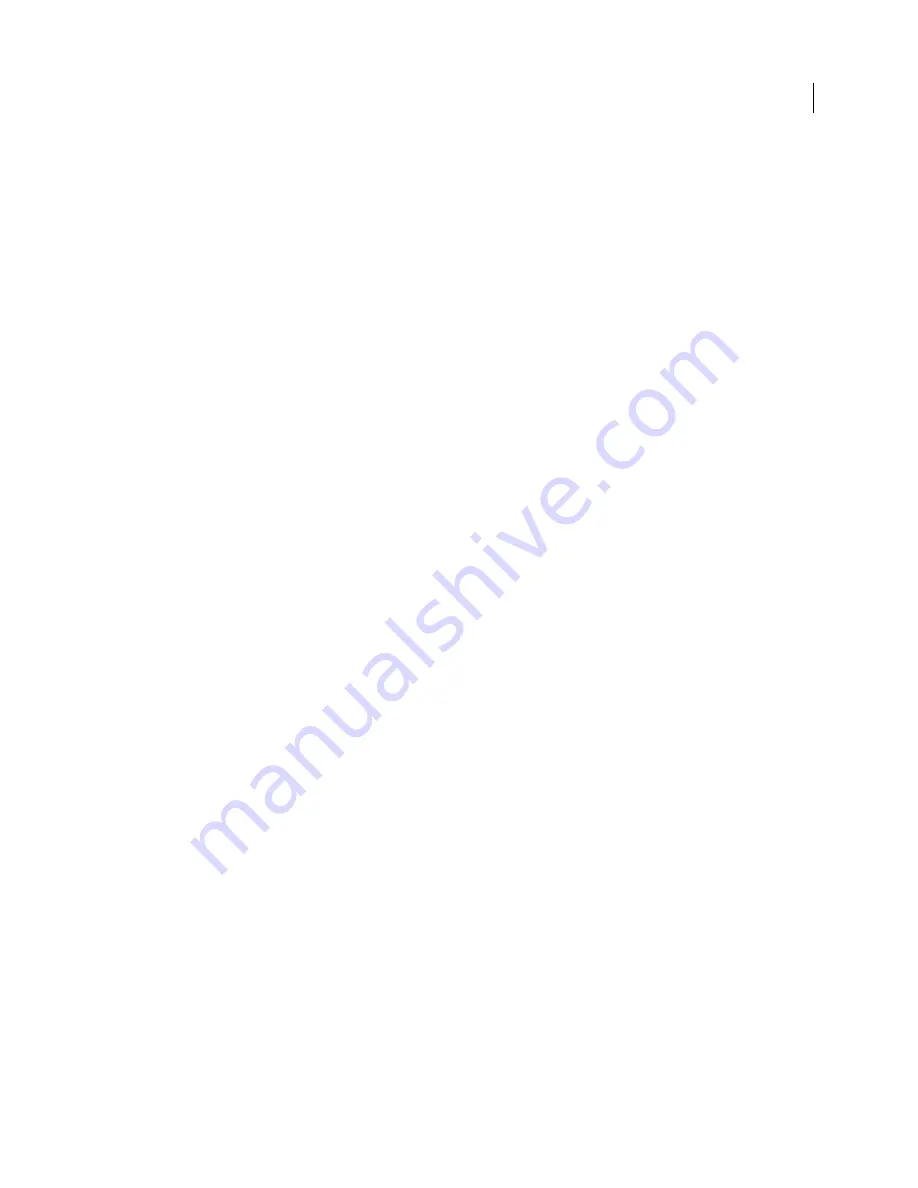
222
USING FLASH CS4 PROFESSIONAL
Timelines and Animation
To create a mask layer, place a mask item on the layer to use as a mask. Instead of having a fill or stroke, the mask item
acts as a window that reveals the area of linked layers beneath it. The rest of the mask layer conceals everything except
what shows through the mask item. A mask layer can contain only one mask item. A mask layer cannot be inside a
button, and you cannot apply a mask to another mask.
To create a mask layer from a movie clip, use ActionScript. A mask layer created with ActionScript can be applied only
to another movie clip. See Using Movie Clips as Masks in
Learning ActionScript 2.0 in Adobe Flash
.
Note:
The 3D tools cannot be used on objects on mask layers and layers containing 3D objects cannot be used as mask
layers. For more information about the 3D tools, see “
3D graphics
” on page
139.
For a video tutorial about animating masks, see
www.adobe.com/go/vid0127
.
For a sample of scriptable masks, see the Flash Samples web page at
www.adobe.com/go/learn_fl_samples
. Download
and decompress the Samples zip file and navigate to the Masking\ScriptableMasks folder to access the sample.
Work with mask layers
You can use mask layers to reveal portions of a picture or graphic in the layer below. To create a mask, you specify that
a layer is a mask layer, and either draw or place a filled shape on that layer. You can use any filled shape, including
groups, text, and symbols, as a mask. The mask layer reveals the area of linked layers beneath the filled shape.
For a video tutorial about animating masks, see
www.adobe.com/go/vid0127
.
For a sample of scriptable masks, see the Flash Samples web page at
www.adobe.com/go/learn_fl_samples
. Download
and decompress the Samples zip file and navigate to the Masking\ScriptableMasks folder to access the sample.
See also
“
Motion tweens
” on page 187
Create a mask layer
1
Select or create a layer containing the objects to appear inside the mask.
2
Select Insert > Timeline > Layer to create a new layer above it. A mask layer always masks the layer immediately
below it; create the mask layer in the proper place.
3
Place a filled shape, text, or an instance of a symbol on the mask layer. Flash ignores bitmaps, gradients,
transparency, colors, and line styles in a mask layer. Any filled area is completely transparent in the mask; any non-
filled area is opaque.
4
Right-click (Windows) or Control-click (Macintosh) the mask layer’s name in the Timeline, and select Mask. A
mask layer icon indicates the mask layer. The layer immediately below it is linked to the mask layer, and its contents
show through the filled area on the mask. The masked layer name is indented, and its icon changes to a masked
layer icon.
5
To display the mask effect in Flash, lock the mask layer and the masked layer.
Mask additional layers after creating a mask layer
❖
Do one of the following:
•
Drag an existing layer directly below the mask layer.
•
Create a new layer anywhere below the mask layer.
•
Select Modify > Timeline > Layer Properties, and select Masked.
Updated 5 March 2009






























